- Currently Miami
- Posts
- Currently in Miami — September 13, 2023: Inland afternoon thunderstorms
Currently in Miami — September 13, 2023: Inland afternoon thunderstorms
Plus, catastrophic floods overwhelm war-torn Libya.
The weather, currently.
The breakdown of high pressure in the upper levels of the atmosphere over South Florida will create instability which, paired with sufficient moisture, will support thunderstorm development on Wednesday. However, northeasterly winds will keep the majority of the rain activity over the interior and away from the east coast—although a few showers and thunderstorms are not out of the question. A similar pattern is expected the rest of the workweek as winds remain out of the north/northeast with Hurricane Lee moving slowly northward over the Atlantic. Temperatures will continue to be in the low to mid 90s from Wednesday through the end of the week, with heat indices in the 100-105 degree range.
El tiempo, actualmente.
El debilitamiento de la alta presión en los niveles superiores de la atmósfera sobre el sur de Florida creará inestabilidad que, combinada con suficiente humedad, favorecerá el desarrollo de tormentas eléctricas el miércoles. Sin embargo, los vientos del noreste mantendrán la mayor parte de la actividad de lluvia en el interior y lejos de la costa este, aunque algunos aguaceros y tormentas eléctricas no se pueden descartar. Se espera un patrón similar durante el resto de la semana laboral mientras que los vientos permanezcan del norte/noreste a medida que el huracán Lee se mueva lentamente hacia el norte sobre el Atlántico. Las temperaturas continuarán en los rangos bajo a medio de los 90 grados desde el miércoles hasta el final de la semana, con índices de calor en el rango de 100 a 105 grados.
What you need to know, currently.
Officials say more than 5,000 people have been killed in Libya after intense rainfall broke through dams and unleashed a torrent of water toward the coastal city of Derna on Monday.
As much as 25% of Derna (pop. 125,000) was washed away by the floods, and local responders have been absolutely overwhelmed. The UN and International Red Cross and Red Crescent Societies have mobilized to bring relief to the region.
The rainfall was caused by Storm Daniel, a “medicane” — a hurricane-like cyclonic storm that formed in the central Mediterranean Sea and also brought intense rainfall to parts of Italy, Greece, Turkey, and Egypt. Medicanes like Daniel are expected to grow stronger as the Mediterranean Sea warms due to fossil fuel-driven climate change.
Storm Daniel making its devastating landfall in Libya.
This time lapse shows Daniel's evolution over the last three days.
— CIRA (@CIRA_CSU)
6:00 PM • Sep 12, 2023
Libya has been enmeshed in civil conflict for much of the past 12 years, so some key infrastructure — like dams — have fallen into disrepair or damage. Worse, internal conflict has delayed aid shipments. Even before the floods, Derna had no functioning hospital due in part to the long-running conflict with the ruling government of western Libya.
“This is not just a natural disaster, this is a human disaster as well as a result of the neglect of the city,” Hani Shennib, president of the National Council on US Libya Relations told Al Jazeera.
Mediterranean cyclone #StormDaniel might be one of the most destructive and deadly events in recent history.
Photo from #Libya— MedCyclones (@medcyclones)
5:54 AM • Sep 12, 2023
To support the relief efforts in Libya, consider donating to the Islamic Relief fund.
What you can do, currently.
Currently Sponsorships are short messages we co-write with you to plug your org, event, or climate-friendly business with Currently subscribers. It’s a chance to boost your visibility with Currently — one of the world’s largest daily climate newsletters — and support independent climate journalism, all at the same time. Starting at just $105.
One of my favorite organizations, Mutual Aid Disaster Relief, serves as a hub of mutual aid efforts focused on climate action in emergencies — like hurricane season. Find mutual aid network near you and join, or donate to support existing networks:
